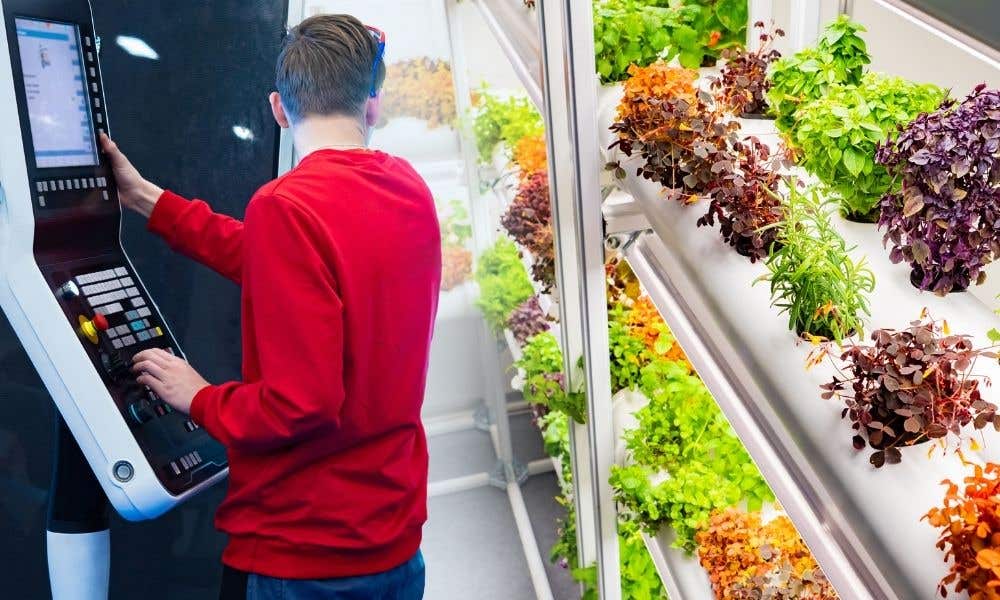One plant in your hydroponic system gathering mold or mildew can mean the difference between a blooming, blossoming harvest and an unhealthy, sick garden. Don’t ignore the speckles of dusty mildew on your plants—do your part to fix the problem and keep it from getting worse. Acting quickly to save your harvest from algae, mildew, and fungus can save you from throwing entire plants into the garbage bin. Learn how to eliminate and prevent mildew on hydroponic plants and keep your crop safe from any fungal menace.
Immediate Solutions
If you’ve noticed a dusting of white mildew on the leaves of your plants, you need to act quickly before it spreads. Severe cases of powdery mildew can prevent your plant from photosynthesizing and can harm any fruits or vegetables if it reaches them. Even if you notice just a few specks, it could turn into a full blanket by the end of the week if you don’t address it.
Here are a few ways to deal with plants afflicted with powdery mildew:
Natural Fungicides
While investing in a chemical fungicide may seem like the easy way out, you may put your plants in danger. Chemicals are also harmful to helpful insects, if you keep any, such as ladybugs. Make a few different at-home fungicides so the mildew can’t build a resistance. Do your best to wipe the most afflicted leaves with a cloth—avoid simply blowing the dusty mildew off to prevent its spread to the rest of your crop.
The most common fungicide recipe includes one gallon of water, a tablespoon of baking soda, a tablespoon of vegetable oil, and a teaspoon of dish soap. If you use dish soap with oil in it, you may not need to add the vegetable oil.
Another method involves any kind of milk—even skim milk. Mix 12 fluid ounces of milk with 28 fluid ounces of water.
For any water-based solution you make, use the same water that you use to mix your hydroponic solution to avoid throwing off your garden. Pour whichever homemade solution you create into a clean spray bottle. Before spraying all affected leaves, test the spray on one leaf first. If it burns or injures the leaf, you may need to alter your solution.
Cut the Afflicted Area
If your mildew problem is currently limited to one lower area of a plant’s leaf, you can cut the tip of the leaf off to prevent its spread. You can make cutting problematic, powdery leaves part of your pruning process. After you prune the mildew away, focus on preventing it from coming back.
Move the Afflicted Plant if Severe
Once you’ve done all you can for the plant, it may be time to make the hard decision to isolate it to save the rest of your harvest. If the mildew has reached the fruit of the plant or caused rot on your leaves, separate it from the rest and dispose of it. If you believe you can still salvage it, keep it in a quarantined area far away from your other plants and treat it however you see fit.
Mildew Prevention
With your powdery mildew under control, it’s time to make sure it never happens again. Go down the checklist of these essential mildew prevention steps to ensure that your future crops don’t suffer the harmful effects of mildew:
Ventilate Your Greenhouse
Mildew struggles to grip your plants’ leaves if there’s a steady breeze in the greenhouse. Make sure that there’s airflow in the growing area by installing vents and placing fans. Prevent bugs from getting in through the vents by covering them with a screen. Oscillating fans will keep dust from settling on the leaves in the first place.
Control the Humidity
Fungi and mildew require high humidity to form—that’s why powdery mildew is typically only an issue during the late summer, or in humid greenhouses. Plants, however, only need around 50 percent humidity to grow and remain healthy. Keep a humidity meter on hand and dehumidify the room if it gets too humid.
Regular Cleaning
If you don’t clean your plants’ containers after every harvest, you’re doing your future crops a disservice. Clean them thoroughly and use the homemade fungicide solutions for a deeper clean.
Mildew can also grow on things within the room that aren’t a part of your garden. Clean up dead leaves and any puddles on the floor as soon as you see them to prevent fungus growth.
Don’t Bring the Outside in
When you own both a hydroponic and an outside soil garden, it’s important to keep the two completely separate from each other. Don’t use any tools from outside in your sterile hydroponic gardening environment—they may have spores or pests on them from the outside that will ravage the fragile hydroponic plants. You shouldn’t even wear the same shoes that you use to garden outside while in a greenhouse.
Sticky Gnat Traps
If you notice that your garden has a gnat problem, you need to handle it right away. Gnats love to eat your plants’ roots and the fungi that grow from mildew. Where there’s a fungus, you’ll soon find these tiny pests and their larvae. Set up sticky traps around the greenhouse to capture the stragglers and look into natural pesticide solutions for larger infestations.
Stop Algae From Growing
While algae itself isn’t a huge problem for your plants, when it rots, it becomes food for gnat larvae. Prevent algae from building up in your plants’ containers by purchasing solid colors—never clear, transparent plastic. At FloraFlex, our hydroponic grow kits come with lids that further block light from coming in without hindering the growth of your plants.
Dispose of Infected Plants Properly
When there’s nothing left to do but dispose of an afflicted plant, make sure that you discard it correctly to avoid future mildew infections. Don’t compost a plant suffering from mold or mildew—bag it up and throw it away. Be careful not to disturb the mildew-stricken leaves so you don’t blow the dusty mildew all over your garden. Scrub all remains of the plant from its container and disinfect with your fungicide solution.
Mildew is a common problem for any hydroponic gardener. Don’t feel discouraged if mildew infects your plants—approach the problem with a cool head and with the knowledge that there are ways to eliminate and prevent mildew on hydroponic plants. Connect with the FloraFlex community on social media today and get in touch with plenty of experienced growers who can help you with any mold or mildew problem.

















